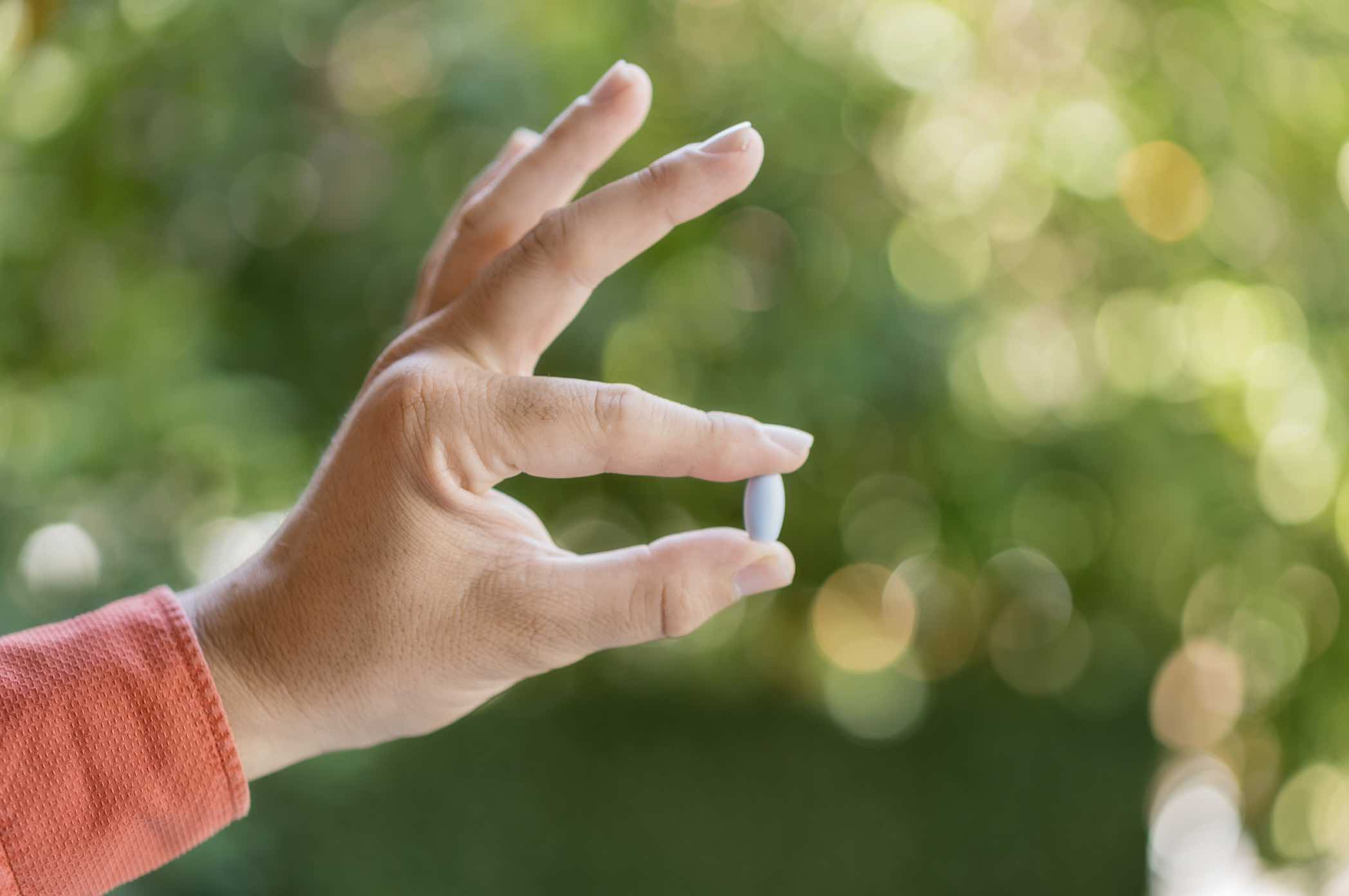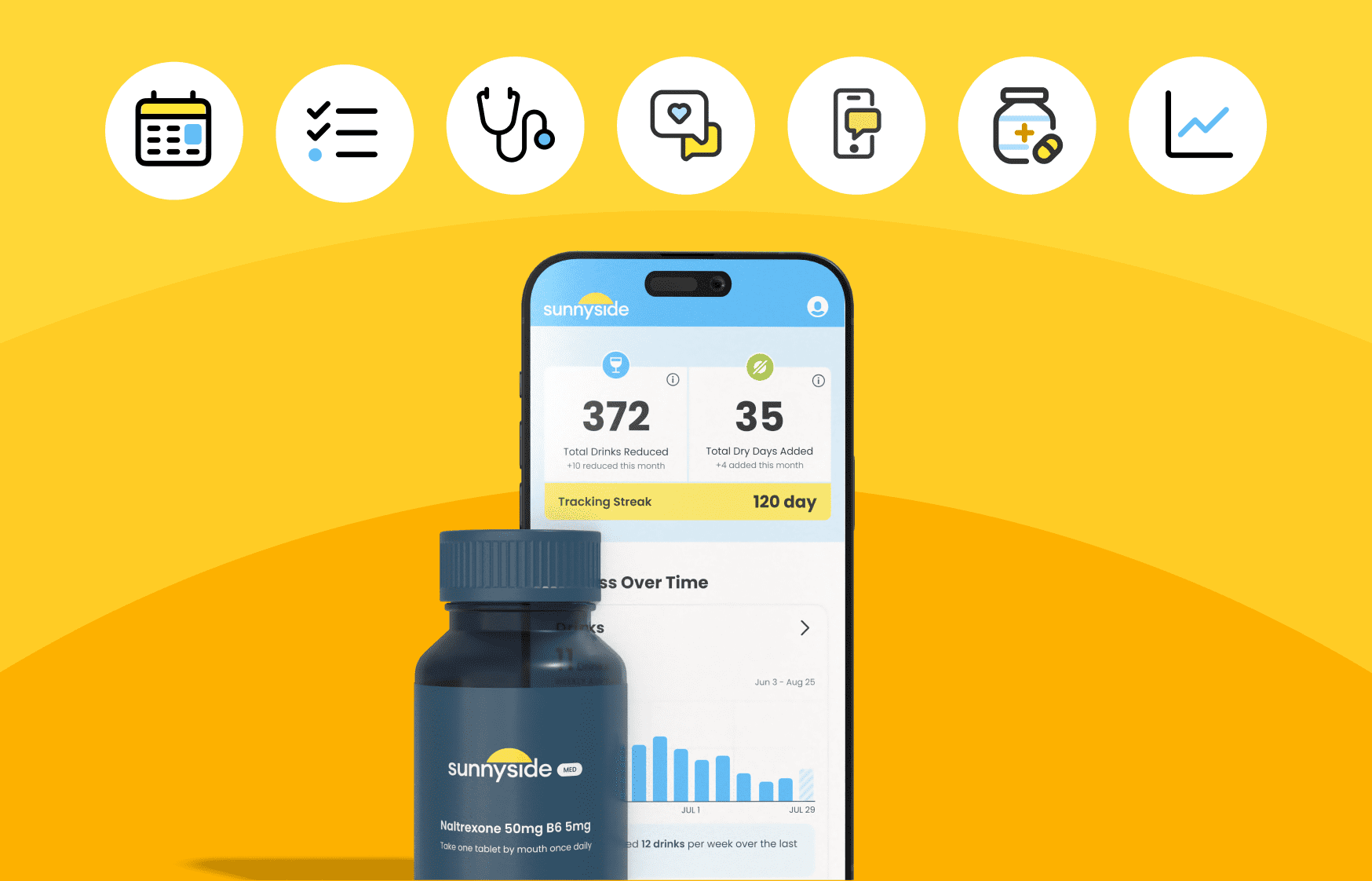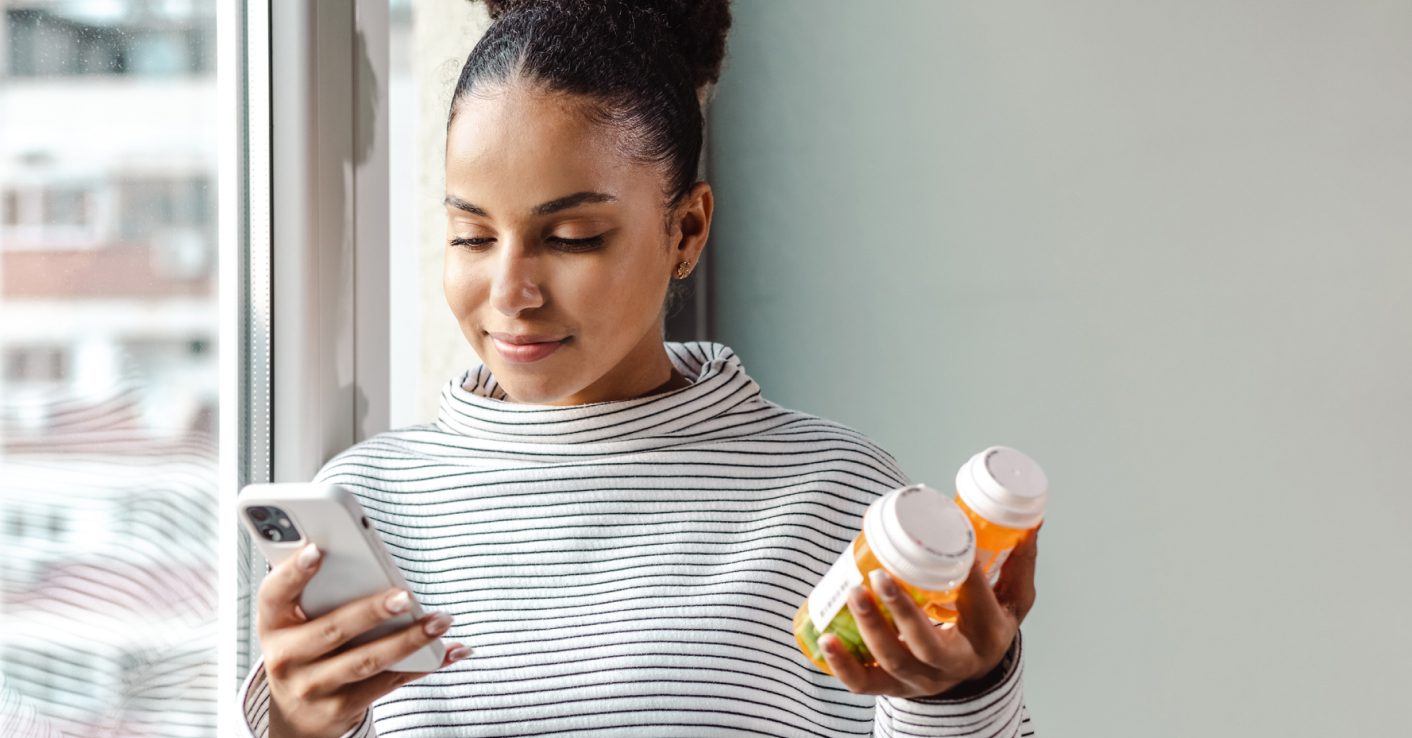Last Updated on July 13, 2023
Have you ever wondered why your face turns red after just a few sips of alcohol while the rest of your friends are able to enjoy their favorite tipples without worrying about a flushed face?
If you get a rosy glow after you drink alcohol, you’re not alone. Many other people notice facial flushing after drinking, which may sometimes be accompanied by other symptoms, such as nausea or headaches. This phenomenon is called the “alcohol flush reaction.”
In this article, we’ll explore the main reason why your cheeks redden after you have a drink. We’ll also take a look at some other ways alcohol may affect your skin and how you can minimize the effects of alcohol on your skin.
The Cause of Facial Flushing from Alcohol Intake
In most cases, your face turns red after you drink alcohol because your body is having trouble digesting the alcohol.
Your body contains enzymes that break down alcohol into acetaldehyde, which is a toxic chemical compound. The enzyme in charge of this process is called alcohol dehydrogenase (ADH) [1]. This is followed by a second step that involves the breakdown of acetaldehyde into non-toxic compounds. The key enzyme that takes the spotlight during this stage is called aldehyde dehydrogenase (ALDH) [1].
An error in the aldehyde dehydrogenase 2 (ALDH2) gene that encodes the ALDH2 enzyme can reduce the efficacy of the second step of the process, causing a buildup of acetaldehyde to occur. This results in facial flushing and other symptoms such as feeling warm, an increase in skin temperature, nausea, headaches, and an increase in breathing rate or heart rate [2].
Essentially, if you experience facial flushing whenever you drink, you could have a faulty ALDH2 gene, which interferes with how well your body is able to metabolize and break down alcohol.
Who is More Likely to Experience the Alcohol Flush Reaction?
The alcohol flush reaction is a genetic condition, meaning that you can inherit it from one or both of your parents.
Research has shown that East Asian ethnic groups, such as Korean, Chinese, and Japanese populations, are more likely to have this defect in the ALDH2 gene compared to Western populations [2].
Is the Alcohol Flush Harmful?
While the alcohol flush in itself isn’t dangerous per se, some research suggests that those who experience it may be more susceptible to esophageal cancer and head and neck cancer [3].
That’s because people with faulty ALDH2 genes are more likely to experience an accumulation of toxic chemicals from drinking alcohol, which may increase their risk of certain types of cancers [3].
What are Other Possible Effects of Alcohol on the Skin?
Getting rosy red cheeks from drinking isn’t the only impact alcohol may have on your skin.
Here are some other ways alcohol may be taking a toll on your complexion and skin health.
1) Dehydrates the Skin
Alcohol has a diuretic effect on the body, which means that it causes the body the get rid of fluids [4]. This doesn’t only dehydrate your body but strips your skin of moisture. This could be the reason why your skin usually feels desert-dry after a night out of drinking with friends.
The diuretic effects of alcohol could spell trouble for your skin’s complexion, as a lack of moisture may contribute to wrinkles and leave your skin looking grey and dull.
2) Causes Sleep-Related Skin Problems
How does alcohol affect sleep? Well, drinking alcohol near bedtime could help land you in dreamland quicker, but these sedative effects typically don’t last through the night.
Research has shown that alcohol can temporarily increase sleepiness but can reduce your overall sleep duration and cause you to wake up more often later in the night. As alcohol prevents you from entering deep and restorative sleep, leading to poorer quality sleep at night [5].
A lack of quality sleep may lead to more pronounced eye bags, raccoon eyes, and crow’s feet and a reduction in your skin’s hydration [6]. In the long run, sleep deprivation may also hasten skin aging, reduce skin elasticity, and affect your skin’s barrier function [7].
3) Aggravates Certain Skin Conditions
Research suggests that alcohol consumption can disrupt your skin barrier’s function, increasing the skin’s permeability to outside compounds and irritants. This may initiate the release of pro-inflammatory protein molecules known as cytokines and lead to an inflammatory response. Thus, alcohol is said to aggravate inflammatory skin conditions such as psoriasis, discoid eczema, and rosacea [8, 9].
Apart from this, alcohol may also increase your risk of skin infections. That’s because alcohol can interfere with your immune system, placing you at a higher risk of skin infections such as cellulitis. Some studies also suggest that alcohol may delay wound healing and raise the risk of wound infections [9, 10].
4) Contributes to Acne Breakouts
While there isn’t a direct link between acne breakouts and alcohol, long-term and excessive alcohol consumption may play a role in exacerbating acne.
Because alcohol can strip the skin of moisture, increase skin inflammation, and tamper with your immune system’s function, there is a risk that having too much alcohol may worsen your acne in the long run.
5) Raises Risk of Skin Cancer
Some research data suggest that alcohol consumption may modestly increase the risk of melanoma, a form of skin cancer. Researchers also found that white wine had the strongest association with melanoma [11].
That said, scientists still aren’t exactly sure how alcohol consumption increases the risk of skin cancer [11]. Plus, more concrete research is needed to confirm these findings.
How Can You Reduce the Impact of Alcohol on Your Skin?
You may be wondering if it’s possible to enjoy both alcohol and healthy skin. The best solution, in this case, is mindful drinking. Mindful drinking is the middle-ground approach that empowers you to build healthier drinking habits, so you can enjoy alcohol while minimizing its negative impacts on your wellness.
By building mindful drinking habits, you can better mitigate the effects of alcohol on your skin and keep your skin looking happier and healthier.
Here are some steps you can take to foster healthier drinking habits and reduce the impact of alcohol on your skin’s health.
1) Cut Back on Your Alcohol Consumption
One of the best ways to improve your skin’s health is to reduce your drinking. Tracking your current habits helps you envision your starting point better and allows you to track your progress along the way. With a starting point in mind, you can then map out a plan that will help you achieve specific wellness goals.
A personalized action plan can help you gradually cut back on your drinking. Many Sunnyside members find that gradually reducing their alcohol intake is more sustainable and achievable compared to going cold turkey right away. Your action plan should specify which days you’re allowed to drink and how much you’re allowed to drink throughout the week.
The Sunnyside app is a mindful drinking app that provides drink-tracking tools to make the process simple and hassle-free. Through the app, you’ll also receive daily reminders to track your drinking as well as access to weekly personalized action plans based on your health goals.
2) Set Pre-Determined Drinking Limits
The most foolproof way to prevent the alcohol flush reaction is to avoid drinking alcohol altogether. Some people may be able to prevent alcohol flushing by limiting their alcohol intake. In any case, having pre-determined drinking limits before a cocktail event, night out, or at-home drinking session is a great way to prevent yourself from having more alcohol than you can handle.
No magic formula can determine exactly how much is too much for you, but there are already general health guidelines in place to help you set a limit. The Dietary Guidelines for Americans define moderate drinking as having two or fewer drinks per day for men and having one or fewer drinks per day for women [12].
But if you don’t consume alcohol daily, this doesn’t mean that you can drink as much as you’d like in a single sitting. Binge drinking comes wrapped in various health risks. Plus, it increases your risk of experiencing an alcohol flush reaction and a nasty hangover. The CDC defines binge drinking as having five or more drinks in a single sitting for men or four or more drinks in a single sitting for women [13].
3) Stay well-hydrated while drinking
Since alcohol is known to have diuretic effects, it’s in your best interest to ensure that your body stays well-hydrated during and after drinking sessions. By doing so, your skin will attain the moisture it needs to keep its natural barrier functioning optimally. Plus, keeping your skin hydrated can help your skin look more supple, plump, and youthful.
During a night out with friends, try to alternate between boozy beverages and non-alcoholic drinks, preferably plain water. This allows you to pace yourself throughout the night and encourages you to drink more water in between sips of alcohol.
4) Transition to a Wind-Down Routine that Doesn’t Involve Drinking
If your nightly wind-down routine is tethered to some alcohol, you may consider replacing that with another activity to help you relax before bed.
For instance, you may listen to a curated playlist of your favorite songs, carry out some simple yoga exercises or meditation, read a book, or enjoy a warm bowl of oats. It’s recommended that your wind-down routine does not involve electronic devices. These devices emit blue light that can throw off your body’s production of an important sleep hormone called melatonin.
If you drink quite a bit of alcohol before bed, you may gradually reduce your nightly intake of alcohol or set up a specific cut-off time for drinking. It’s best to stop drinking alcohol at least 4-6 hours before bed.
How Sunnyside Helps You Build Healthier Drinking Habits for Happier Skin
Your skin has the incredible ability to heal and rejuvenate itself. So it’s never too late to start nurturing healthier drinking patterns that are less likely to take a toll on your skin.
It will take some time and practice to redirect your drinking habits, of course. But Sunnyside can make that journey more simple, convenient, and fun. Sunnyside is a mindful drinking app that taps into proven habit-change techniques to help you reach your wellness goals.
Through Sunnyside, you’ll set weekly targets, receive accountability messages, track your drinking habits, and gain support from real-life coaches and a like-minded community. Sunnyside equips you with tools, information, and practical tips that will help you cut back on your alcohol intake in a sustainable way!
References
[1] https://onlinelibrary.wiley.com/doi/full/10.1111/jch.14475
[2] https://www.ncbi.nlm.nih.gov/pmc/articles/PMC6989374/
[3] https://jbiomedsci.biomedcentral.com/articles/10.1186/s12929-017-0327-y
[4] https://academic.oup.com/alcalc/article/45/4/366/155478
[5] https://www.ncbi.nlm.nih.gov/pmc/articles/PMC4666864/
[6] https://pubmed.ncbi.nlm.nih.gov/31692145/
[7] https://pubmed.ncbi.nlm.nih.gov/25266053/
[8] https://pubmed.ncbi.nlm.nih.gov/23549156/
[9] https://pubmed.ncbi.nlm.nih.gov/21611681/
[10] https://www.ncbi.nlm.nih.gov/pmc/articles/PMC4590615/
[11] https://www.ncbi.nlm.nih.gov/pmc/articles/PMC5137801/
[12] https://www.dietaryguidelines.gov/resources/2020-2025-dietary-guidelines-online-materials



